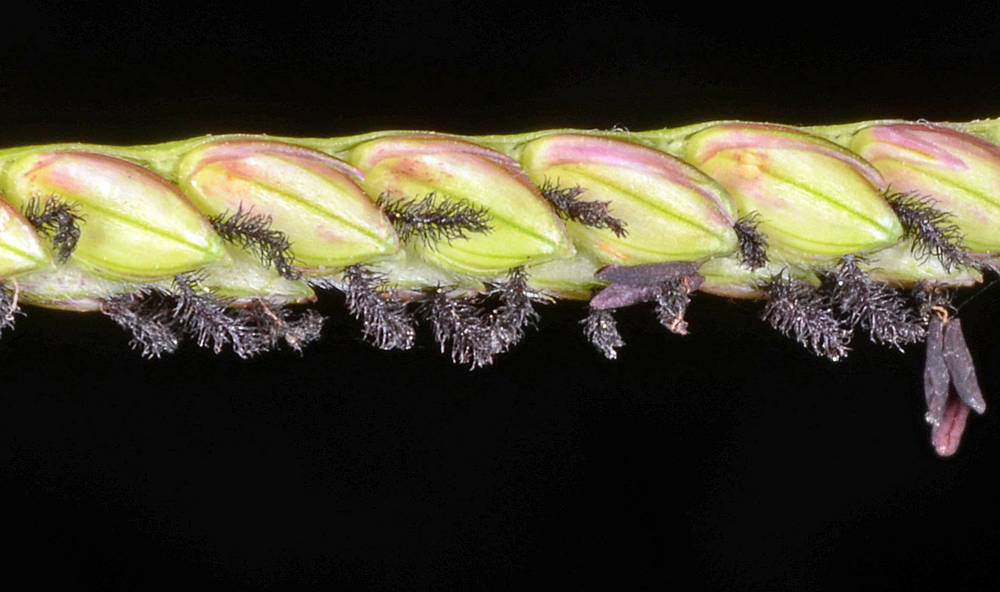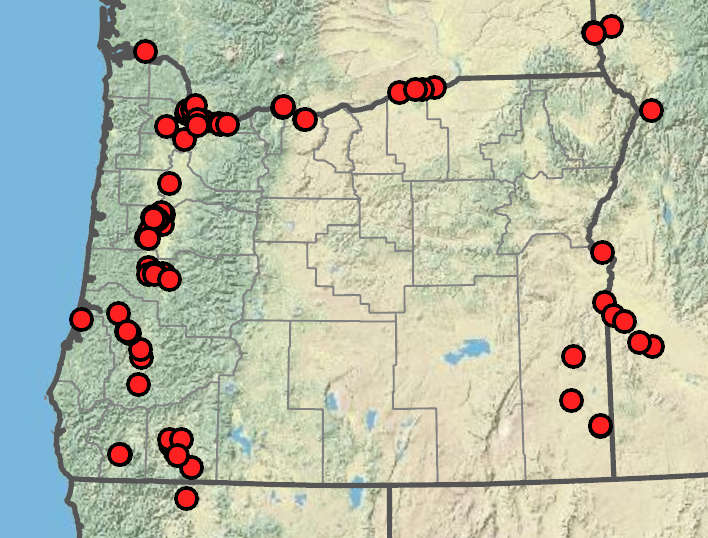Paspalum distichum
knotgrass
erect or ascending; lateseason shoots bulbous at the base.
sheaths mostly glabrous, sparsely long-pubescent distally; those growing under water densely hairy;
blades flat or folded; to 14 cm × 1.8–11.5 mm, glabrous or sparsely long-pubescent.
V-shaped panicles, 1.4–7 cm;
branches usually 2(3), 1.5–5.5 cm;
spikelets in rows on one side of branch.
solitary or rarely paired, 2.4–3.2 × 1.1–1.6 mm, 2 florets.
1 or 2;
lower glumes absent or triangular and to 1 mm;
upper glumes 2.4–3.2 mm, 3-veined, sparsely short-pubescent on the back.
1.9– 2.1 mm, yellow.
lower lemmas as long as upper glumes but glabrous; upper lemmas 2.5–3 mm, obscurely 3-veined; hard; straw-colored; shiny, glabrous;
tips acute; awnless.
1–1.5 mm.
=20, 30, 40, 48, 60.
Paspalum distichum
Wet ditches, marshes, river banks. 0–1200m. Col, Est, Owy, Sisk, WV. CA, ID, NV, WA; northwestern and southern US; tropical and warm-temperate areas worldwide. Native.
Paspalum distichum is a strongly rhizomatous grass usually with two short panicle branches. Cynodon dactylon also has spike-like inflorescence branches and is equally rhizomatous, but it usually has more inflorescence branches and laterally flattened spikelets with two glumes. Digitaria species are loosely cespitose and often have smaller spikelets.
Barbara Wilson, Richard Brainerd, Nick Otting
- Local floras:
BC,
CA,
OR,
WA
- Local Web sites:
CalFlora,
CalPhotos,
Flora NW,
PNW Herbaria
WildflowerSearch
iNaturalist (observations)
USDA Plants Database
- LBJ Wildflower Center
- SEINet
- Plants of the World Online
- Encyclopedia of Life
- Wikipedia
- Google Image Search



